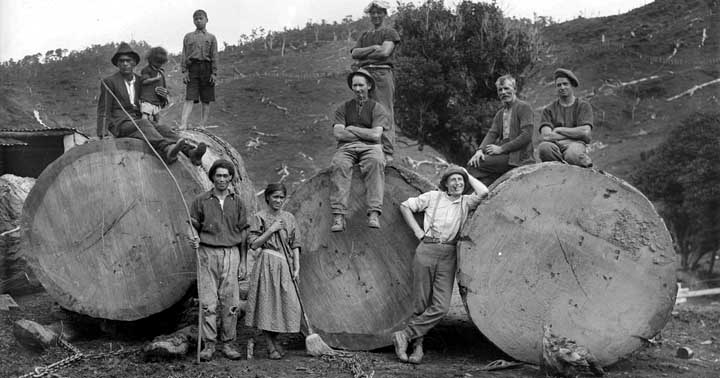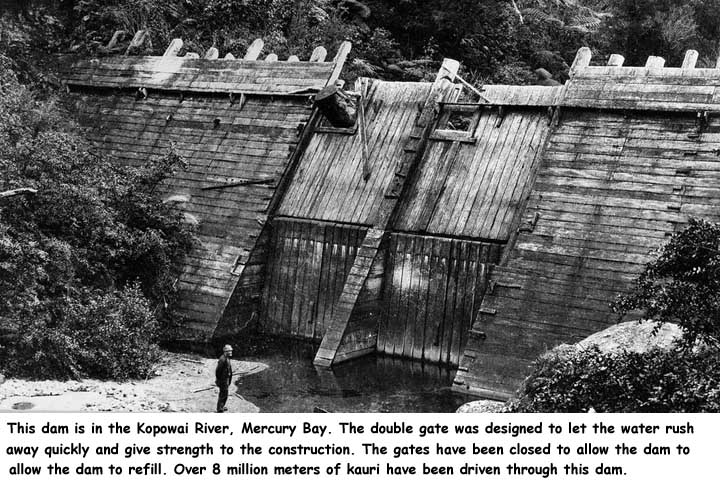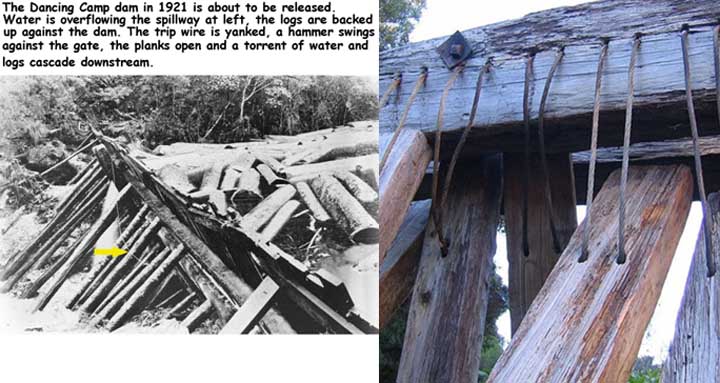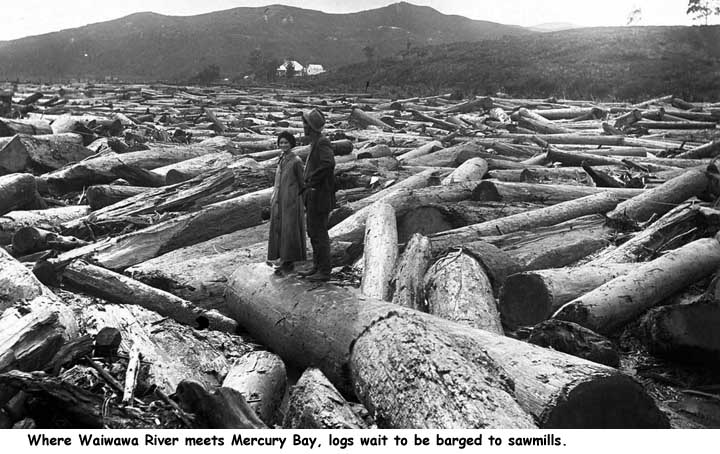
|
|
|
What's IotD? The interesting, amazing, or mind-boggling images of our days. |
|
IotD Stuff |
|
Permalink Latest Image |
|
|
|
Some folks who have noticed IotD
Neatorama |
|
Common image haunts
Astro Pic of the Day |
|
Advertising |
Sept 17th, 2017: Kauri Dam
When the empire builders were spreading like a fungus they were always looking for riches, but would exploit
anything they could on these excursions. Europeans had already decimated their forests for more arable land
to feed the ever expanding population. So the were thrilled to find forests in the Americas, Australia, and
New Zealand to supply wood to build more ships for more pillaging.

In New Zealand they discovered Agathis australis, commonly known by its Māori name kauri.
Itís a coniferous tree and a big one. Not quite at tall as Redwoods, but as big around at the base and donít
taper up like a Redwood so produce more lumber. It takes juvenile trees 167 years to get established, and
the trees between 1 and 2 thousand years tend to rot in the center. The wood is light, straight grained, easy
to work, very few knots, and for ships, borer resistant.
The natives had a ceremony for when they cut these trees for 60 meter(200 ft) dugout canoes and got pissy
when the exploiters cut the few along the coast. But the Europeans didnít take long to ďconvinceĒ the natives
to play nice. Most of the Kauri were inland at higher elevations, so camps of pit sawyers were set up to make
lumber and started exporting in 1820. Too slow, too inefficient, and couldnít meet demand.

North Americans used water to move the logs, and since Kauri in the only buoyant wood in New Zealand,
itís a natural. But the only water was tiny streams coming from the mountains. Depending on the source,
they brought in a few men from North America or Iceland, who knew how to build Driving Dams.
A dam across a ravine which would take sometimes a year to fill behind it. While it filled, logs were dumped
in the water and when opened sent water and logs tearing down, and tearing up, these ravines.
The lead 2% of the logs were destroyed and others had rocks embedded 18 inches into the wood.
Bad juju for saw mills.

The Kauri Driving Dams would rot out, wash away, or the trees close by would run out, so in 90 years they
built 1,000, or 3,000 dams, depending again on the source. I really went down the rabbit hole on this one,
reading a dozen articles trying to find out how the dam was opened. There would be an awful lot of pressure
against those gates. One drive in the 1920s sent 28,000 logs downstream and that takes a lot of water.
With all that pressure how in hell did a trip wire and a hammer open all the vertical planks held by cables
at the top for reuse?

At the bay the logs would be barged or cabled together into a raft and towed to sawmills as far as 300 km
(186 miles) away.
Of the 1.6 million hectares (4 million acres) on the North Island, 7,000 hectares (17,300 acres) of native
forest remain today. The Government turned it into a park but the forestry experts can agree whether to
leave it alone or cull the really old trees so the young ones can grow.
link
link
link
Gravdigr Sunday Sep 17 01:21 PM
I woulda died dead as a doornail if I'd had to work that hard.
xoxoxoBruce Monday Sep 18 01:18 PM
Griff Monday Sep 18 06:58 PM
Whoopsie.
|
Your reply here?
The Cellar Image of the Day is just a section of a larger web community: a bunch of interesting folks talking about everything. Add your two cents to IotD by joining the Cellar. |
